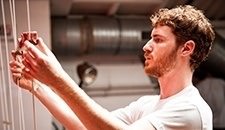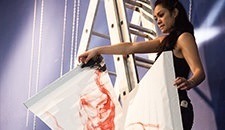What is the role of a museum curator?
Working as a curator in an art museum involves many different qualities: mainly, however, the curator is responsible for the safekeeping and presentation of the works of art in the museum where he/she works. On a day to day basis, this can mean moving objects, getting them ready for exhibitions or changing exhibitions, making sure information is updated on the object- in fact every type of activity around the work of art. If you are the head curator, you will be involved in acquisitions for the museum, policy regarding exhibitions and many administrative roles that are involved in running a department. In some museums, curators take on additional roles, for example they may work on outreach and educational programmes, on preparing and writing catalogues for exhibitions, in setting up the display for an exhibition. This is especially true in smaller museums or private museums.
An important role for a museum curator and be the curation of exhibitions. This can mean determining the message of the exhibition, sourcing the works of art to exhibit and carrying out extensive research for the exhibition catalogue. Of course much depends on the size and nature of the museum, but it is this academic study, which is combined with a deep knowledge of a permanent collection, that makes a museum curator different from a gallerist.
How to become a museum curator?
Museum curators are generally specialists in one area or another of art history; it is really useful to have a broad background when you start your career, so that you can use your existing knowledge in new situations. The more you know about handling and care of objects, good archival and documentation practice, or what is involved in setting up exhibitions, the more likely you are for people to consider your application. Our MBA in Collecting Management is designed to teach you these skills.
Entering the museum world is one of the most competitive areas of the art world as it requires high academic and administrative skills. That is why having a CV that shows you understand the practices of curation and display is very useful. Having a postgraduate degree that shows you know how to carry out independent research is also essential. Because in some countries, museum staff are state employees, it is also useful to look at curatorial positions in private museums or larger galleries.


 Download application form
Download application form 


